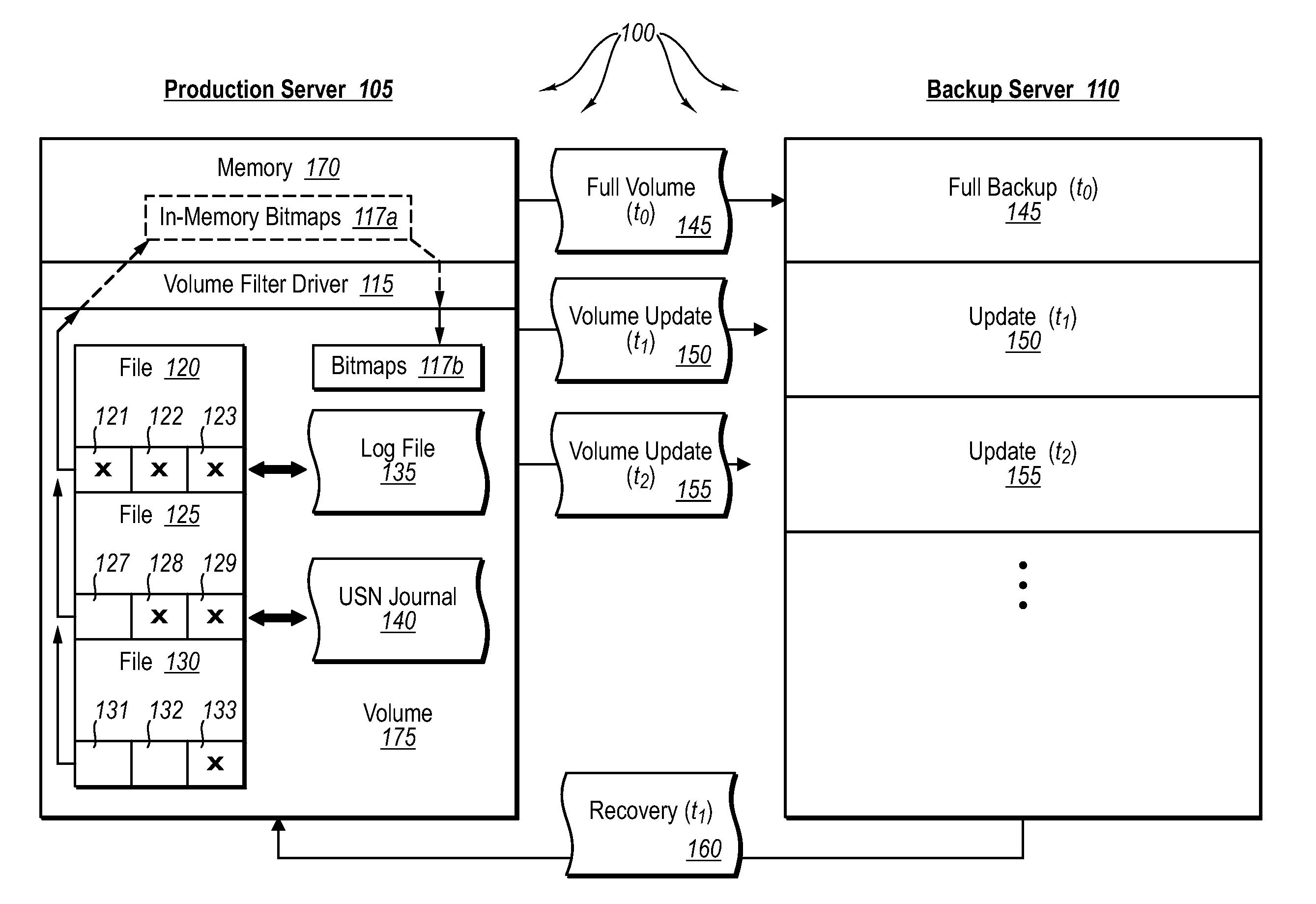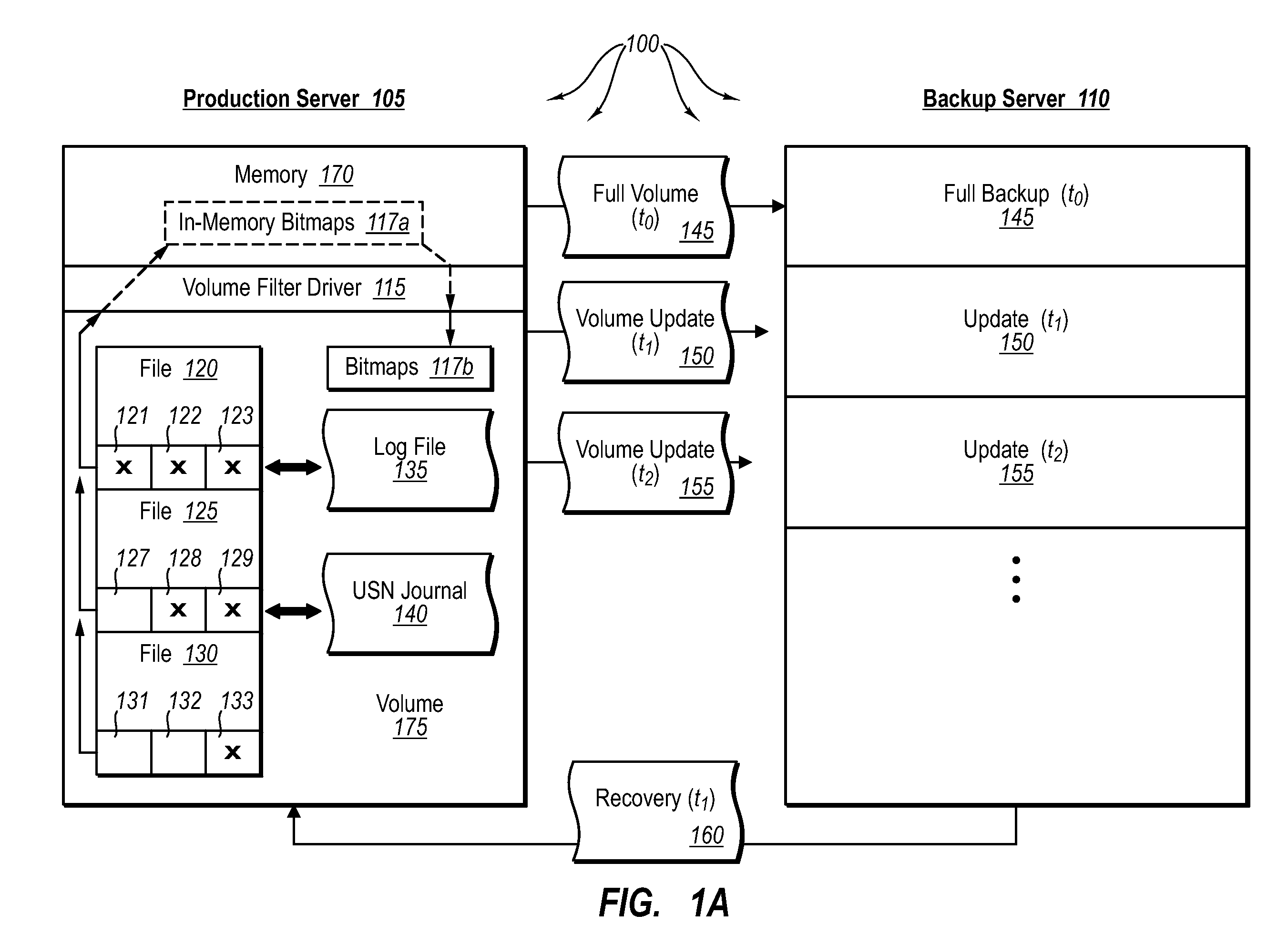Creating frequent application-consistent backups efficiently
a backup copy and application technology, applied in the field of efficiently creating frequent application consistency backups, can solve the problems of many difficulties, the file state of the corresponding backup copy may not necessarily be consistent for a single point in time, and the efficiency of many conventional systems, so as to achieve the effect of efficient use of production servers, network bandwidth and backup server resources
- Summary
- Abstract
- Description
- Claims
- Application Information
AI Technical Summary
Benefits of technology
Problems solved by technology
Method used
Image
Examples
Embodiment Construction
[0020]The present invention extends to systems, methods, and computer program products configured at least in part to optimize recovery point objectives and recovery time objectives in backup systems. For example, in at least one implementation, resource savings at a production server can be achieved by monitoring changes to production server volumes with a volume filter driver. In addition, network bandwidth and backup server resources can be used efficiently by transferring primarily just the incremental changes (e.g., bytes, or byte ranges of changes) to a backup server since the last replication cycle. As will be appreciated more fully herein, such optimizations can provide the ability to backup production server data in a virtually continuous (or near continuous) fashion without significant drains on production server resources, backup server resources, and / or network bandwidth concerns.
[0021]As will be appreciated more fully from the following specification and claims, impleme...
PUM
 Login to View More
Login to View More Abstract
Description
Claims
Application Information
 Login to View More
Login to View More - R&D
- Intellectual Property
- Life Sciences
- Materials
- Tech Scout
- Unparalleled Data Quality
- Higher Quality Content
- 60% Fewer Hallucinations
Browse by: Latest US Patents, China's latest patents, Technical Efficacy Thesaurus, Application Domain, Technology Topic, Popular Technical Reports.
© 2025 PatSnap. All rights reserved.Legal|Privacy policy|Modern Slavery Act Transparency Statement|Sitemap|About US| Contact US: help@patsnap.com



